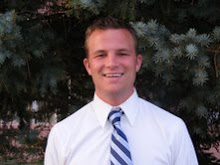 g a few members of our program, ranging from freshman to seniors. As mentioned in my last blog post, this course has offered our students some time for valuable dialogue for an hour or so each week.
g a few members of our program, ranging from freshman to seniors. As mentioned in my last blog post, this course has offered our students some time for valuable dialogue for an hour or so each week.Yesterday I brought up the topic of gentrification. Honestly, before I joined the Jesuit Volunteer Corps, I had hardly heard of this term or really knew what it meant. Gentrification is when wealthier people move into and develop a 'deteriorating' area of a city. This results in a displacement of the poorer and original residents of the community.

The students apart of this discussion are all long time residents of Washington, DC. I was intrigued by their thoughts and we began to make a pros/cons list their personal feelings of gentrification in the neighborhood, specifically the nearby neighborhood of Columbia Heights:
Pros:
- Increases value of property
- Makes the streets and buildings cleaner
- Less drug dealing and drug use
- Public transportation more accessible to area
- Police walk or bike more, less need to drive
- Brings in more grocery and retail stores
- Curfew is instated for kids under the age of 18
- Brings diversity into the area
- Removes affordable housing (including Section 8) which forces people out of the area
- Too many large condos not occupied by many people
- Restaurants, movie theaters increase prices
- Too crowded
- Drives historical value out of area
- Less character
- Loss of original community
 Columbia Heights is an example of where a drastic gentrification has taken place. Columbia Heights is a neighborhood between my communities home in Petworth and my placement in Adams Morgan. 14th street is a historic place where the 1968 riots took place after Martin Luther King Jr's assassination. After the riot, it left many homes and buildings vacant for decades. This resulted in Columbia Heights becoming a booming area for drug dealing and other criminal activity.
Columbia Heights is an example of where a drastic gentrification has taken place. Columbia Heights is a neighborhood between my communities home in Petworth and my placement in Adams Morgan. 14th street is a historic place where the 1968 riots took place after Martin Luther King Jr's assassination. After the riot, it left many homes and buildings vacant for decades. This resulted in Columbia Heights becoming a booming area for drug dealing and other criminal activity. In 1999, the city began revitalizing the neighborhood, especially 14th Street. They
In 1999, the city began revitalizing the neighborhood, especially 14th Street. They installed a metro stop and new businesses began breaking ground to begin the process of rebuilding. Despite the changes, crime and drug use continued. A couple of my students said that until recently they were never allowed to travel alone to the Columbia Heights metro. As the rise of new buildings continued, peoples homes and small businesses including bodegas, pharmacies, and grocery stores were pushed out of the area. This was because either people couldn't afford the new high taxes (due to the value of property increasing) or because the city forced them out to make room for new developments.
installed a metro stop and new businesses began breaking ground to begin the process of rebuilding. Despite the changes, crime and drug use continued. A couple of my students said that until recently they were never allowed to travel alone to the Columbia Heights metro. As the rise of new buildings continued, peoples homes and small businesses including bodegas, pharmacies, and grocery stores were pushed out of the area. This was because either people couldn't afford the new high taxes (due to the value of property increasing) or because the city forced them out to make room for new developments.Seven blocks east of Columbia Heights is our neighborhood known as Petworth. Petworth is beginning to look more like
 Columbia Heights, where newer condos being built and many more young professionals moving into the neighborhood. Overall, gentrification does two things: For one thing, it makes the neighborhood safer and more appealing for new people to move in. And secondly, it drives the original residents out of their community and they are forced to find a new place to live. One student put it as: "I wish we could make the neighborhood safe without losing the community."
Columbia Heights, where newer condos being built and many more young professionals moving into the neighborhood. Overall, gentrification does two things: For one thing, it makes the neighborhood safer and more appealing for new people to move in. And secondly, it drives the original residents out of their community and they are forced to find a new place to live. One student put it as: "I wish we could make the neighborhood safe without losing the community."Thanks to my students Donnell, Faizah, Imani, and Naje for their willingness to share their thoughts on gentrification in Washington, DC.
